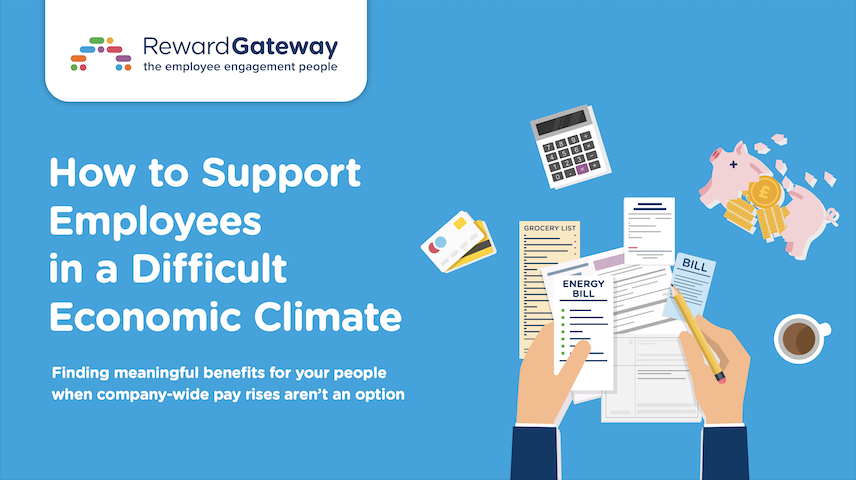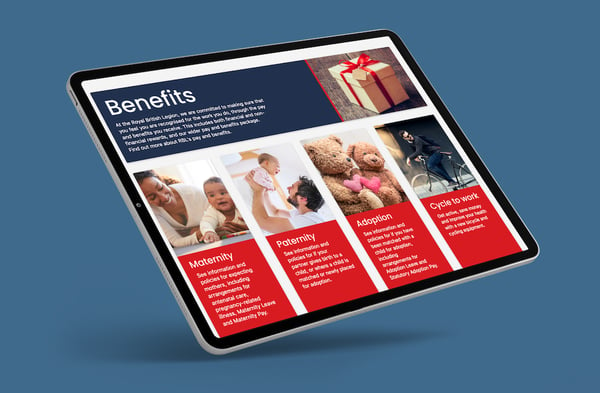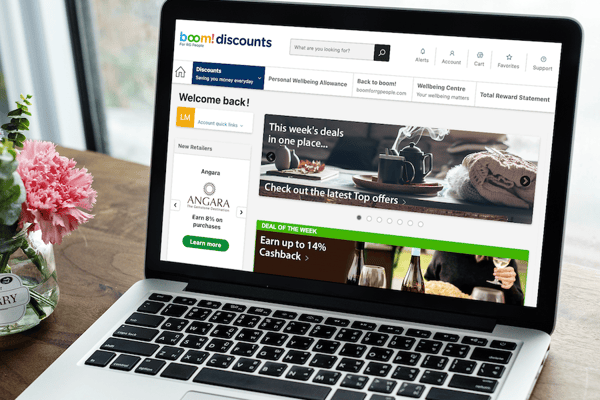Poor take-up in existing employee benefits is a key issue that many employers often face. With all the expenses involved with researching, procuring, and installing the best benefits you can find for your employees, it’s undoubtedly frustrating when they don't take advantage of the resources.
But instead of abandoning the employee benefits program altogether due to low uptake or deeming it a failure, concentrating on how to best drive more usage of your benefits hub can turn everything around.
The challenges facing employee benefit take-up
There are multiple reasons that affect why employees don’t take advantage of or sign up for their benefits. To improve employee uptake of the company benefits you’ve set up for them, it’s first important to understand the barriers employees may be facing.
 Employees are busy - Let’s face it, they have their jobs and duties, family and friends, outside responsibilities, and self-care. All this demands their time and attention. When it comes down to it, ‘signing up for benefits’ doesn’t often get to the top of their to-do list.
Employees are busy - Let’s face it, they have their jobs and duties, family and friends, outside responsibilities, and self-care. All this demands their time and attention. When it comes down to it, ‘signing up for benefits’ doesn’t often get to the top of their to-do list.
Not understanding the benefits – Consider the app on your phone that you don’t know how to use so it sits on your phone and just takes up space. The same can be true for benefits. You can lead them there, but if your employees don’t understand what’s being offered, why bother?
Lack of employee benefits awareness - Not every employee will know what is available to them and if they are unaware of the resources available, they will not use them.

Uncover more ways maxmise your benefits and support employees through cost of living increases
To understand the challenges more, consider this scenario:
Gail is at home with their life partner, and they are going over benefits together. To explore discounts benefits, they need to leave the wellness programme website to go to another vendor’s portal to see what is available. They have trouble signing in and try on their phone. The site doesn’t pull up easily and they can’t read the full text. Plus, what they can read makes no sense. They realise they will need to ask for help at the workplace but when they start work, they forget to ask. Before they know it, weeks have passed by, and they forgo getting the employee benefit.
Sound familiar? Your employees are going through this daily. So how can you improve the employee experience for them and drive that usage?
How to make your employee benefits hub more effective for employee uptake
Once you’re aware of the barriers that could be preventing or delaying employees from signing up for the benefit, it is easier to make improvements. There are several steps that can be taken with your benefits hub that will make a notable difference in employee participation.
Step 1: Make employee benefits easily accessible
It is one thing to build a benefits package for your employees, but quite another to create simple means for accessing those benefits.
The first solution would be to catalogue all the benefits on one hub to eliminate confusion and frustration. When employees aren’t forced to switch from site to site and manage multiple logins, you’re more likely to see them using their benefits simply by housing them in one place and making it easy for them to access.

A prime example is the charity, Royal British Legion which had a large proportion of staff that were offline workers. They created an employee benefits platform with the support of Reward Gateway that connected their staff and offered an easy user experience that every member of their staff could buy into, centralising holiday trading, an employee discounts programme, Cycle to Work and more.
Step 2: Make benefits fit into their daily lives
 Not all employees have a company computer or work at the job site. When employees want to look over company benefits during down time or when they are at home, they need multiple ways to access their benefits that fits their situation.
Not all employees have a company computer or work at the job site. When employees want to look over company benefits during down time or when they are at home, they need multiple ways to access their benefits that fits their situation.
Making the hub compatible with PCs, tablets, and mobile phones offers more options for employees to access their benefits.
This allows them to research benefits even when they are waiting on a bus, travelling on a train, or away from their desk and the day-to-day buzz of work.
An example of an employee benefits hub done right for a hard-to-reach workforce is when Babcock International Group focussed on their discounts and benefit hub by centralised, consistent employee experience supported by Reward Gateway to reach a 53% take-up.
Step 3: Make employee benefits understandable
 What might seem easy and understandable to you may not be as easy to comprehend by others. Benefit providers can have the same approach when explaining the benefits. The information they provide can be heavily filled with financial jargon or meant for too wide an audience and misunderstood by your own staff.
What might seem easy and understandable to you may not be as easy to comprehend by others. Benefit providers can have the same approach when explaining the benefits. The information they provide can be heavily filled with financial jargon or meant for too wide an audience and misunderstood by your own staff.
To assist your employees who are a unique group of individuals, it’s worth the time to take the instructions the provider offers and break them down into the language tailored to your employees.
You want to have the language written exactly in a way that is right for your workforce and use examples and case studies that are completely tailored to them. Having it written on the hub in a way that is right for your workforce will add clarity.
Step 4: Give employees a reason to visit the benefit hub
A trade secret that not everyone knows about is employee shopping discounts. This is the special sauce that you should use to get your employees to your employee benefits hub on a daily and weekly basis. Shopping discounts are accessible, universal, and easy to understand. Since everyone goes shopping and wants to save as much money as they can, this is a great way of enticing people into your bigger and wider benefits proposition – especially with the rise in the cost of living.

Step 5: Communicate benefits effectively
 Once you have all the employee benefits on one portal, easy to access and written in the language they can comprehend, the ideal next step would be to sit back and relax and watch as employees sign up and use the benefits. But that is not always the case.
Once you have all the employee benefits on one portal, easy to access and written in the language they can comprehend, the ideal next step would be to sit back and relax and watch as employees sign up and use the benefits. But that is not always the case.
Getting employees to visit the hub is a vital focus for improving employee uptake of benefits.
This can be done by effectively communicating company information on the benefits hub and offering more information/reminders for why it’s important for employees to check out their benefits on offer. Dunelm, UK’s leading home furnishing retailer did just this within their organisation by regular company updates, wellbeing content, and shared videos from senior management, providing regular opportunities for employees to engage with its hub and, in turn, its benefits hosted on the hub.
Why it is important for employees to use company benefits
When more employees take up company benefits, it improves overall company output. Employees are more engaged, more productive, and just happier. In turn, employers enjoy growth in business, higher sales, and improved employer branding. So, it makes sense that when benefits are available to employees, you want them to use them. By creating a benefits hub that makes company benefits easily accessible, understandable, and mobile you will improve your chances of employee uptake.
To learn more about how you too can build a benefits hub that employees don’t just use, but love – get in touch with us today.

 Nikola Jack
Nikola Jack



